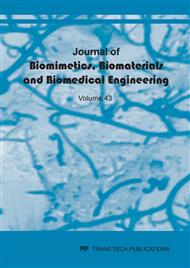[1]
Ho Mei Kei(Corporate and User Services Division Department of Statistics), Press Release Statisfic on Cause of Death, Malaysia, 2017,, Malaysia, (2017).
Google Scholar
[2]
S. Omar Hasan Kasule, Epidemiology of breast cancer in Malaysia,, (2005).
Google Scholar
[3]
C. H. Yip, N. B. Pathy, and S. H. Teo, A review of breast cancer research in Malaysia,, Medical Journal of Malaysia, vol. 69. p.8–22, (2014).
Google Scholar
[4]
S. Walker, C. Hyde, and W. Hamilton, Risk of breast cancer in symptomatic women in primary care: A case-control study using electronic records,, Br. J. Gen. Pract., vol. 64, no. 629, pp. e788–e795, (2014).
DOI: 10.3399/bjgp14x682873
Google Scholar
[5]
M. T. Redaniel, R. M. Martin, M. J. Ridd, J. Wade, and M. Jeffreys, Diagnostic intervals and its association with breast, prostate, lung and colorectal cancer survival in England: Historical cohort study using the Clinical Practice Research Datalink,, PLoS One, vol. 10, no. 5, p.1–17, (2015).
DOI: 10.1371/journal.pone.0126608
Google Scholar
[6]
J. J. J. Geenen, J. P. Baars, P. Drillenburg, and J. Branger, A large lump in the left breast,, Netherlands Journal of Medicine, vol. 72, no. 9. (2014).
Google Scholar
[7]
C. Nordqvist, What are breast lumps?,, Medical News Today.
Google Scholar
[8]
S. K. M Hamouda, R. H. Abo El Ezz, and M. E. Wahed, Enhancement Accuracy of Breast Tumor Diagnosis in Digital Mammograms,, J. Biomed. Sci., vol. 06, no. 04, p.1–8, (2017).
DOI: 10.4172/2254-609x.100072
Google Scholar
[9]
R. D. S. Teixeira, Automatic Analysis of Mammography Images: Classification of Breast Density,, Universidade do Porto, (2013).
Google Scholar
[10]
M. J. Yaffe, Mammography,, in Medical Imaging: Principles and Practices, 2012, p.1–22.
Google Scholar
[11]
M. H. Abdallah, A. A. AbuBaker, R. S. Qahwaji, and M. H. Saleh, Efficient technique to detect the region of interests in mammogram images,, J. Comput. Sci., vol. 4, no. 8, p.652–662, (2008).
DOI: 10.3844/jcssp.2008.652.662
Google Scholar
[12]
Angayarkanni.N, Kumar.D, and Arunachalam.G, The Application of Image Processing Techniques for Detection and Classification of Cancerous Tissue in Digital Mammograms,, Angayarkanni.N al /J. Pharm. Sci. Res. Vol. 8(10), 2016, 1179-1183 8, vol. 8, no. 10, p.1179–1183, (2016).
Google Scholar
[13]
S. C. Ling, A. A. Abdullah, and W. K. W. Ahmad, Design of an automated breast cancer masses detection in mammogram using Cellular Neural Network (CNN) algorithm,, J. Comput. Theor. Nanosci., vol. 20, no. 1, p.254–258, (2014).
DOI: 10.1166/asl.2014.5307
Google Scholar
[14]
U. R. A. Karthikeyan Ganesan, C. K. Chua, L. C. Min, K. T. Abraham, and K.-H. Ng, Computer-aided Breast Bancer Detection Using Mammograms: A review,, 2014 2nd World Conf. Complex Syst. WCCS 2014, vol. 6, p.626–631, (2014).
DOI: 10.1109/icocs.2014.7060995
Google Scholar
[15]
R. Dubey, Review on Various Techniques of Mammogram Image,, Int. J. Adv. Res. Electron. Commun. Eng., vol. 4, no. 5, p.1456–1460.
Google Scholar
[16]
R. Brunelli and O. Mich, Histograms analysis for image retrieval,, Pattern Recognition, J. Pattern Recognit. Soc., vol. 34, no. 8, p.1625–1637, (2001).
DOI: 10.1016/s0031-3203(00)00054-6
Google Scholar
[17]
N. S. A. Huslan, W. Khairunizam, I. Zunaidi, and H. Venketkumar, Computational investigation of breast cancer on mammogram image information Computational Investigation of Breast Cancer on Mammogram Image Information,, in AIP Conference Proceedings 2045, 2018, vol. 020029, no. December.
DOI: 10.1063/1.5080842
Google Scholar


